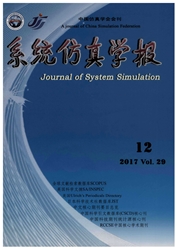

 中文摘要:
中文摘要:
蒙特卡罗(MC)方法被广泛运用于无线通信系统的误码率仿真,由于信源、信道和系统发收机处理单元等存在时间相关性,仿真结果不服从经典MC估计,无法用已知结论评估其置信度,此问题目前尚缺乏一般性解决方法。首先提出了“平稳有限相邻相关条件”的概念,推导了该条件下MC估计置信度的若干结论,分析指出无线通信仿真通常满足该条件,最后基于该条件提出了一种通用仿真置信度分析方法,该方法在不增加仿真时间复杂度的前提下,在获得误码率估计的同时,可以给出估计的方差、置信区间、最大相对误差等置信度指标。该方法被运用于WiMAX系统的仿真中,仿真结果验证了结论的正确性。
 英文摘要:
英文摘要:
Monte Carlo (MC) simulation is widely used for estimating bit error rate (BER) performance on wireless communications. Due to the time correlation characteristic brought by data source, fading channel, and other memory processing units, the simulation result does not follow traditional MC conditions and its confidence probability cannot be evaluated by existed conclusions. A universal method was brought forward to evaluate the variance and other confidence parameters of the MC result based on the characteristic of wireless communication simulations that one sample could be seemed as uncorrelated to another when the distance between them was large enough. All the conclusions have been demonstrated by simulations in typical WiMAX systems.
 同期刊论文项目
同期刊论文项目
 同项目期刊论文
同项目期刊论文
 Proportional fair-based joint subcarrier and power allocation in relay-enhanced orthogonal frequency
Proportional fair-based joint subcarrier and power allocation in relay-enhanced orthogonal frequency Performance analysis on carrier scheduling schemes in the long-term evolution-advanced system with c
Performance analysis on carrier scheduling schemes in the long-term evolution-advanced system with c Heterogeneous Cooperative Relay Selection with Maximal-Ratio Combining for Multi-Radio Access Networ
Heterogeneous Cooperative Relay Selection with Maximal-Ratio Combining for Multi-Radio Access Networ Investigation of Capacity and Call Admission Control in TD-SCDMA Uplink Systems Employing Multi-user
Investigation of Capacity and Call Admission Control in TD-SCDMA Uplink Systems Employing Multi-user Doppler Spread Estimation by Tracking the Delay-Subspace for OFDM Systems in Doubly Selective Fading
Doppler Spread Estimation by Tracking the Delay-Subspace for OFDM Systems in Doubly Selective Fading Performance analysis of multiuser diversity in cooperative multi-relay networks under Rayleigh fadin
Performance analysis of multiuser diversity in cooperative multi-relay networks under Rayleigh fadin Cross-layer design for tree-type routing and level-based centralised scheduling in IEEE 802.16 based
Cross-layer design for tree-type routing and level-based centralised scheduling in IEEE 802.16 based A utility-based capacity optimization framework for achieving cooperative diversity in the hierarchi
A utility-based capacity optimization framework for achieving cooperative diversity in the hierarchi Joint optimisation for power control, scheduling and routing algorithms in the infrastructure wirele
Joint optimisation for power control, scheduling and routing algorithms in the infrastructure wirele 期刊信息
期刊信息
